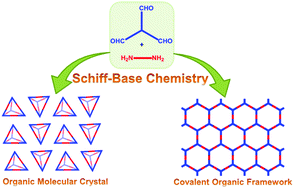Development of organic porous materials through Schiff-base chemistry
Abstract
In the past decade there has been tremendous interest in the development of organic porous materials due to their great potential in gas storage/separation and catalysis applications. These purely organic-based porous materials are constructed through covalent bonds and usually exhibit high chemical and thermal stability. A variety of chemical reactions have been utilized to construct organic porous materials, among which Schiff-base chemistry has been one of the most frequently used approaches. Since such chemistry doesn't require expensive transition metal

- This article is part of the themed collection: Covalent organic frameworks

 Please wait while we load your content...
Please wait while we load your content...